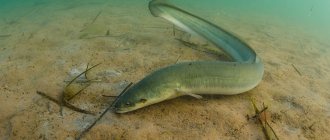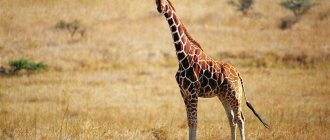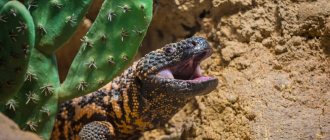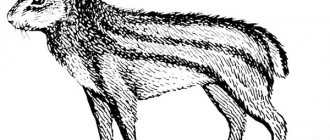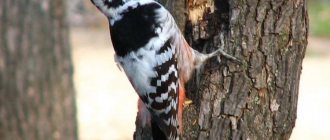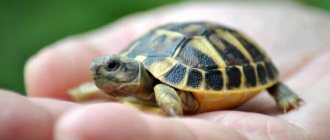Incredible facts
Almost all animals need sleep.
But some creatures realize this need in very unusual and interesting ways.
From those who sleep 20 hours a day to those who sleep with only half their brain, below we've rounded up the most unusual sleep patterns across the animal kingdom.
Elephants
Elephants in the wild sleep just two hours a day, according to a new study. And this is not continuous sleep, it happens in fits and starts over several hours. Although in their case they could afford more without worrying about attacks from predators.
To get this information, scientists from the University of Witwatersrand in Johannesburg, South Africa, attached motion sensors and small monitors to two female elephants and recorded their activity for a month.
Mostly the animals slept standing up, but sometimes they lay down. They didn't choose where they slept, and their activity level during the day didn't seem to influence how long they napped. These conclusions were reached by specialists whose study was published in the journal Plos One.
Who eats sea otter?
Sea otters, or sea otters, will not refuse to dine on shellfish or crab, but their favorite food is sea urchins. By eating these animals, sea otters prevent climate warming, reducing the greenhouse effect.
Interesting materials:
What is transit delivery? What is it to think? What are uniform prefixes? What is an Ender chest in Minecraft? What is an energy efficient home? What is an ERC-20 address? What is photosynthesis and what conditions are necessary for the process of photosynthesis? What is a gala dinner? What is a gainer and how is it different from protein? What is a geyser and how is it formed?
There are more than 12 species of otters, but almost all of them are on the verge of extinction
The only species of these furry animals that you don't need to worry about is the North American river otter.
Their population is not decreasing, which cannot be said about other species. The remaining 12 species are critically endangered and are therefore protected by the International Conservation Organization (IUCN). Unfortunately, man himself had a hand in the disappearance of otters, because these animals are often hunted for their valuable fur. In addition, more and more fresh water bodies are being polluted by industrial facilities, making them unsuitable for otters to live in.
How animals sleep
Giraffes
In the wild, these bulky giants can go for weeks without sleep, although they use this feature when necessary. Being large and slow, they are constantly on guard, as they are wary of predators.
When they put off sleep, they have to stand all the time on lanky legs, which, after a certain time, can no longer help them in the face of an attack. Interestingly, they can sleep for five minutes at a time, gaining a total of about half an hour per day.
According to the study authors, who worked with elephants, giraffes in captivity sleep 4-5 hours a day.
Sperm whales
In 2008, a group of specialists studied the behavior and sounds made by sperm whales off the coast of Chile. Then they made an amazing discovery: a company of several sperm whales was sleeping in such a sound sleep in the water that none of them saw or heard the approaching boat.
Although these largest of the toothed whales sleep with one hemisphere, while the other half of the brain is awake, they sleep very soundly.
The whales swayed in an upright position in the water, some were completely submerged in the water, others only stuck out their noses. This happened until the small boat accidentally bumped into one of the bows. This woke up the animals and they all swam away.
Based on this, the researchers suggested that sperm whales actually fall completely asleep, for 10-15 minutes at a time. They do not breathe during sleep.
Features of animal sleep
Walruses
You might envy the walrus for its sleeping habits: this not-so-good-smelling guy can sleep anytime and anywhere, whether he's swimming in the water, lying on the ground, or just leaning against another walrus.
Researchers noted that they even saw walruses sleeping with their tusks caught on an ice floe.
Jerome Siegel, director of the sleep research center at UCLA, told Discovery News that these mammals can hold their breath and sleep underwater for 4-5 minutes because they also sleep with one hemisphere of their brain.
On land, they fall into deep sleep, which can last up to 19 hours. It seems they actually need sleep: walruses can have periods of activity where they stay awake and swim for up to 84 hours at a time.
Otters eat an amount of food equal to 10-15% of their body weight every day
These cute animals have to eat quite a lot, because their quality of life depends on their diet. Plentiful food allows them not only to survive, but also to stay warm. This is especially true for sea otters, as they expend a lot of energy throughout the day. It's funny that not all animals are interested in seafood. For example, in Scotland there is a species of otter that hunts rabbits, ignoring fish.
They can swim fast
Otters reach speeds of up to 12 km/h in water. Their pace is three times faster than the average human swimmer. While searching for food, they can hold their breath for 3-5 minutes - enough time to dive and dig up a few shellfish.
Photo: mana5280
When diving, otters close their nostrils and ears to keep water out. Powerful tails propel them through the water. River otters also have webbed toes.
Otters often sneak into other people's houses
Why build your own when you can use ready-made options? This is exactly the otter’s life concept. At the same time, the animal must be given its due - it extremely rarely occupies a house in which someone already lives. Often the otter moves into vacant housing. An exception is made, perhaps, in the case of beavers: an otter can occupy a forest builder's dam, despite the fact that he is still there. That’s why these animals don’t get along with each other and often fight!
The Sumatran otter is a taxon of Lazarus
The Sumatran otter is an endangered species native to Southeast Asia. It was considered extinct until 1998, when scientists discovered small populations in the swampy forests of Thailand. This rediscovery after its supposed extinction makes it a taxon of Lazarus, an extinct animal that was later rediscovered.
The biggest threats to Sumatran otters are poaching and habitat loss due to forest fires, dam construction and clearing of swamp forests for oil palm plantations and fisheries.
Reproduction
Little is known about him, and the facts that science has managed to establish are interpreted ambiguously by different observers. Basically, sea otters are monogamous, but in places where they are large (with an abundance of food resources), the development of polygamous relationships can often be observed. During mating and pair formation, fights between males are often observed, and fighting between mating pairs has also been observed.
The appearance of puppies occurs in a hole, in a den. The female has 2 pairs of nipples. Often a family changes shelter in search of better places for food; in this case, the parents carry the cubs in their teeth or swim on their backs across the sea, holding them on their bellies.
Otters love communication
Of course, if people are nearby, these animals become cautious and distrustful, but among themselves they are very active and sociable.
They can often be seen playing and frolicking in ponds. They can run, chase their own tails, swim on their backs and enjoy life. When the mating season comes, there are even more otters - the groups expand, accepting more and more new individuals.
Fathers do not participate in raising children
If we talk about families, you can often see a mother and her offspring. Males, as is typical for most animals, leave their offspring in infancy and go their own way, transferring upbringing “to the shoulders” of their mother.
Babies are usually born with their eyes closed and once they open them, they have to learn a lot with their mother, who helps them acquire hunting and swimming skills.
Sleeping habits in the animal kingdom
Ducklings
Researchers at Indiana University were filming ducklings for another experiment when they noticed interesting things about duck sleep.
Firstly, ducklings almost always sleep in rows. Secondly, the ducklings closing the row on both sides keep the “closing” eye open, while the ducks located inside the row allow themselves to sleep with both eyes closed.
Dolphins
Dolphins are like whales; only half of their brain sleeps. In their case, you need not only to be on alert to hear the approach of a predator, but also to know when to rise to the surface for air so as not to suffocate in your sleep.
According to Scientific American, dolphins sleep in one of two ways: either resting in a deep form of sleep (in which case they look like logs floating in the water), or simply swimming slowly next to each other.
When they sleep and swim at the same time, it is a light sleep, akin to how people doze.
Newborn dolphins do not sleep for the first few months of life. At the same time, the mother should sleep while moving, and she should not stop swimming during the first few weeks of the baby’s life.
Animals in a dream
Sharks
We don't know much about sharks, including how they close their eyes. However, one thing we do know is that sharks need to breathe, they need to move water through their gills, which is why most sharks sleep while moving.
But some small shark species, such as the baleen nurse shark, can use their spiracles (small holes under each eye that act like gills) to force water through their gills while they lie on the ocean floor.
Recently, for the first time, researchers were able to film a white shark sleeping. Footage captured by a robotic submersible near the Mexican Peninsula in California showed a female shark swimming closer to shore in shallow water as night fell.
She swims against the current with her mouth open, so water continues to flow through her gills. At the same time, the speed of movement decreases greatly, which is why researchers believe that at these moments the shark is sleeping.
Snails
Have you heard the story about the snail that slept for four years? Natural History magazine published a story about how, in the late 19th century, a British museum worker found the shell of an Egyptian land snail and, assuming it was empty, attached it to an identification card.
Four years later, he noticed traces of mucus on the card. The man put the shell in the water, and when the shell detached from the card, the snail allegedly crawled out.
The common garden snail hibernates from late autumn to spring under rocks, fallen leaves, in cracks in the ground or in rocks. Their shells fit tightly to the surface, protecting the snail itself from the wind and retaining heat.
Other snails spend the summer hibernating. This means that during hot and dry periods they go into a prolonged state of dormancy, as happened in the case of the aforementioned sleepy snail.
Enemies
Their main enemies are killer whales (killer whales). Young animals are also preyed on by sharks, marine predators and birds.
Sea otters are omnivores and forage in the intertidal zone. The animal's diet includes crabs, shellfish, aquatic birds, fish and other organisms that live in the sea. It happens that it also enters rivers, looking for freshwater shrimp. During the period of fruit ripening, it eats the fruits of plants of the bromeliad family.
Where do sea otters live?
Sea otters are inhabitants of shallow coastal areas with depths not exceeding 100 meters.
Scientists distinguish three subspecies of these animals. The southern sea otter lives off the coast of California; the population numbers about 3 thousand individuals.
The northern sea otter's range occupies most of the North American coast: from California to the Aleutian Islands. They are most numerous in Alaska and the Aleutian Islands, where they number up to 70 thousand individuals.
A third subspecies, the Asian sea otter, lives in Russian waters. According to various estimates, there are from 25 to 30 thousand individuals in the waters of the Kuril, Commander Islands, and Eastern Kamchatka.
Giant river otters live up to their name
The giant otter is an endangered species. It lives in South America, mainly along the Amazon River and the Pantanal swamp. This is the largest and longest species of otter. Giant otters grow up to two meters in length and weigh up to 35 kg. They eat 4kg of food every day!
Poaching for their velvety fur has led to a significant decline in the population. Habitat degradation, pesticides and pollution from mining also pose threats. Experts estimate that fewer than 8,000 individuals remain.
The densest fur of any mammal
For every two and a half centimeters of body, the otter has about a million hairs, which makes their fur incredibly thick.
It consists of two layers: the undercoat and the longer fur that covers the animal's body. This feature is not accidental: air accumulates in these layers, allowing the otter to quickly dry out and not freeze even in the coldest water. It also promotes buoyancy.
What does an otter eat?
The otter mainly eats food that it forages in the water. The otter feeds mainly on fish, usually pike, roach, trout, carp, goby and others. When hunting for fish, it eats small specimens right in the water, but it can drag large fish onto land. The animal often plays with the caught fish and then eats it.
In addition to fish, the river otter eats various mollusks and larvae that are found in reservoirs. The otter also feeds on water voles and other small rodents, and eats frogs, lizards and bird eggs. In addition, the animal otter often hunts ducks, waders and other birds living in water bodies.

